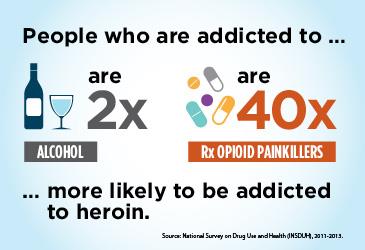The nation’s heroin epidemic is worsening, and a large part of it is fueled by people who also meet diagnostic criteria for “abuse of” or “dependence on” prescription opioids, according to new data from the Centers for Disease Control and Prevention (CDC). New guidance can help physicians identify these patients and help them get treatment.
Heroin use has increased across the United States, and heroin-related overdose deaths nearly quadrupled from 2002 to 2013, according to the CDC’s latest Vital Signs.
 And while heroin is an illicit drug, the strongest risk factor for abuse or dependence on it may be surprising. Nearly one-half of the people studied previously abused or were dependent on prescription opioids. According to the CDC, people who met these criteria for prescription opioids are 40 times more likely to abuse or be dependent onto heroin.
And while heroin is an illicit drug, the strongest risk factor for abuse or dependence on it may be surprising. Nearly one-half of the people studied previously abused or were dependent on prescription opioids. According to the CDC, people who met these criteria for prescription opioids are 40 times more likely to abuse or be dependent onto heroin.
Physicians collectively took steps at the 2015 AMA Annual Meeting to address this public health issue, adopting policies that call for increased registration and physician use of prescription drug monitoring programs (PDMP), more robust education, and adequate coverage for comprehensive pain management approaches and addiction treatment. Meanwhile, physicians individually can take action to prevent opioid abuse in their patient populations, including following appropriate prescribing practices using PDMPs and supporting overdose prevention efforts.
The CDC also encourages physicians to support medication-assisted treatment, using methadone, buprenorphine and naltrexone, in patients who may be addicted to prescription opioids or heroin.
A new free guide from the United States Substance Abuse and Mental Health Services Administration emphasizes the fact that “many studies show that the treatment of an opioid use disorder can be successfully integrated into general office practice by physicians and health providers who are not addiction specialists.” The guide focuses on a new option, extended-release injectable naltrexone, for treating patients with opioid use disorders. It also gives clinical guidance, such as assessing patients’ need for treatment, making treatment plans and deciding when to end treatment.
Learn more about the AMA’s ongoing efforts to combat prescription drug abuse and diversion.




